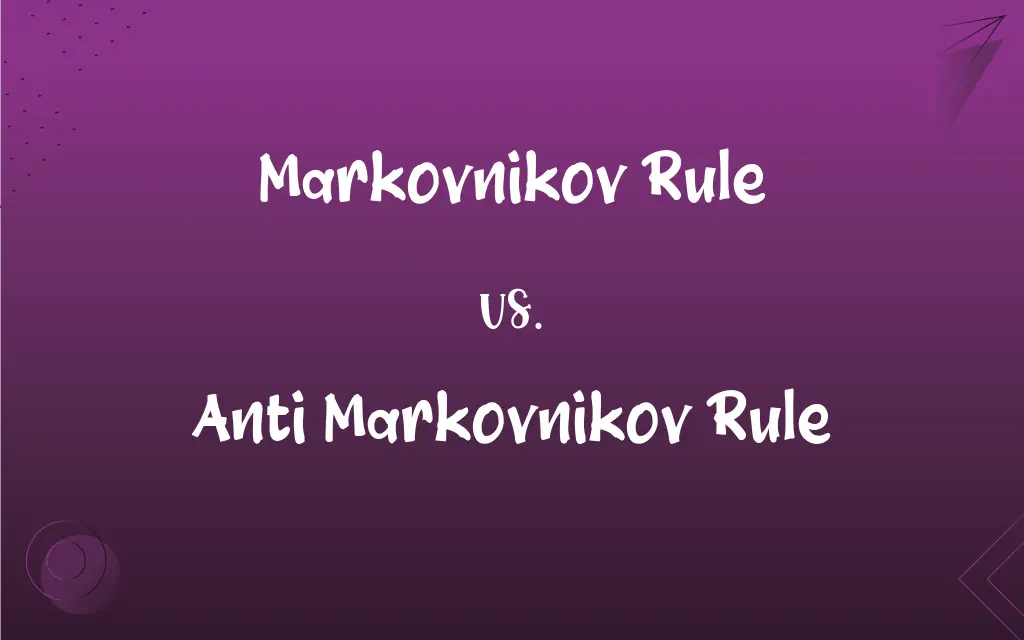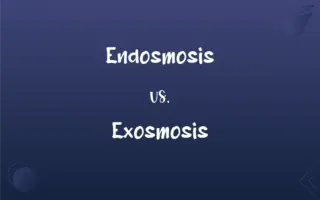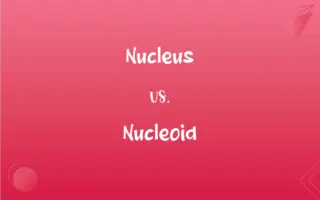Markovnikov Rule vs. Anti Markovnikov Rule: What's the Difference?
Edited by Aimie Carlson || By Harlon Moss || Updated on October 21, 2023
Markovnikov's rule predicts the major product in the addition of protic acids to unsaturated hydrocarbons, while the anti-Markovnikov rule describes the opposite regioselectivity.

Key Differences
Markovnikov's rule is a principle in organic chemistry that describes the outcome of certain types of addition reactions. Specifically, it predicts that during the addition of a protic acid (like H-Cl, H-Br, etc.) to an unsaturated hydrocarbon, the hydrogen (H) atom will add to the less substituted carbon, resulting in the more stable carbocation. In contrast, the anti-Markovnikov rule details reactions where the added elements do not follow Markovnikov's prediction, with the hydrogen adding to the more substituted carbon instead.
In practical terms, the Markovnikov rule implies that when you add, for example, hydrobromic acid (HBr) to propene, the major product will be 2-bromopropane. Conversely, the anti-Markovnikov rule would predict the major product to be 1-bromopropane. These distinctions become particularly important when dealing with reactions like hydroboration, which naturally follow the anti-Markovnikov rule.
While both rules are essential for predicting the outcomes of addition reactions, the original Markovnikov rule was based on the stability of carbocations. On the other hand, the anti-Markovnikov rule is not always associated with carbocations, as the mechanisms for these reactions often involve different intermediates.
To understand the significance of these rules, one must appreciate that the products of organic reactions aren't always straightforward to predict. The Markovnikov rule and its counterpart, the anti-Markovnikov rule, serve as guidelines for chemists to anticipate reaction outcomes and streamline their efforts in synthesis.
Comparison Chart
Definition
Predicts addition to less substituted carbon
Predicts addition to more substituted carbon
ADVERTISEMENT
Basis
Carbocation stability
Different reaction mechanisms
Typical Reaction
Addition of H-Cl to ethene yields 2-chloroethane
Hydroboration of ethene yields 1-ol product
Underlying Principle
More stable intermediates lead to major products
Reaction pathways not always involving carbocations
Importance
Fundamental in predicting major products in organic chemistry
Essential for certain specific reactions, e.g., hydroboration
Markovnikov Rule and Anti Markovnikov Rule Definitions
Markovnikov Rule
A guideline that predicts the regiochemistry of addition reactions.
Using Markovnikov's rule, the chemist predicted the major product of the reaction.
ADVERTISEMENT
Anti Markovnikov Rule
Contrasts the more commonly observed Markovnikov regioselectivity.
While Markovnikov's rule is widely observed, certain conditions promote anti-Markovnikov outcomes.
Markovnikov Rule
A principle based on the formation of the most stable carbocation.
The Markovnikov rule suggests the formation of a tertiary carbocation during the reaction.
Anti Markovnikov Rule
Predicts the formation of less substituted addition products.
The anti-Markovnikov rule directed the chemist toward the minor product.
Markovnikov Rule
Established by Russian chemist Vladimir Markovnikov in 1870.
The Markovnikov rule, originating in the 19th century, remains relevant in modern organic chemistry.
Anti Markovnikov Rule
Describes the addition of elements contrary to Markovnikov's prediction.
In the presence of peroxides, the bromination of alkenes follows the anti-Markovnikov rule.
Markovnikov Rule
Directs the addition of protic acids to alkenes.
The Markovnikov rule indicated the hydrogen would add to the end carbon of the alkene.
Anti Markovnikov Rule
Often observed in hydroboration reactions.
Hydroboration-oxidation reactions are a classic example of the anti-Markovnikov rule in action.
Markovnikov Rule
Prioritizes the formation of the major product in certain addition reactions.
By applying the Markovnikov rule, one can determine the predominant product formed.
Anti Markovnikov Rule
Not always associated with carbocation intermediates.
The reaction mechanism for anti-Markovnikov additions often bypasses carbocation formation.
FAQs
Why is carbocation stability important in Markovnikov's rule?
The rule is based on the tendency of reactions to form the most stable carbocation as an intermediate.
What does Markovnikov's rule predict?
Markovnikov's rule predicts the major product in protic acid additions to unsaturated hydrocarbons.
Can both rules be applied to the same molecule under different conditions?
Yes, the product distribution can be influenced by changing the reaction conditions or reagents.
Who introduced Markovnikov's rule?
The rule was introduced by Russian chemist Vladimir Markovnikov in 1870.
Why are carbocations not always involved in anti-Markovnikov reactions?
The reaction mechanisms often involve different intermediates or pathways that bypass carbocation formation.
Are these rules universally accepted in organic chemistry?
Yes, they are fundamental guidelines, but chemists are always aware of exceptions and nuances in various reactions.
Are all anti-Markovnikov reactions free from carbocations?
Not always, but many such reactions, like hydroboration, don't involve carbocation intermediates.
Does the anti-Markovnikov rule only apply to hydroboration?
No, while hydroboration is a classic example, the rule applies to other reactions under specific conditions.
Which rule gives the more substituted alkene product?
Markovnikov's rule predicts the formation of the more substituted alkene product.
Which rule is associated with the hydroboration-oxidation reaction?
The anti-Markovnikov rule is commonly associated with hydroboration-oxidation reactions.
How does the anti-Markovnikov rule contrast this?
The anti-Markovnikov rule predicts the opposite regioselectivity, with additions not following Markovnikov's prediction.
Why are these rules significant in organic synthesis?
They guide chemists in predicting the outcomes of addition reactions, aiding in synthesis planning.
Which rule is generally more common in typical addition reactions?
The Markovnikov rule is more commonly observed, though exceptions exist.
How can I shift a reaction towards an anti-Markovnikov product?
Using specific reagents, like BH3 in hydroboration, or introducing conditions like peroxides can favor anti-Markovnikov products.
Is the formation of a major product always dictated by Markovnikov's rule?
While often true, there are exceptions based on specific conditions or reagents that lead to anti-Markovnikov products.
Is the anti-Markovnikov rule applicable to all addition reactions?
No, it's specific to certain conditions or reactions, like hydroboration or radical additions in the presence of peroxides.
How do peroxides affect bromination reactions?
In the presence of peroxides, bromination of alkenes can follow the anti-Markovnikov rule.
What kind of product does the Markovnikov addition of HBr to propene yield?
It yields 2-bromopropane as the major product.
Are there exceptions to Markovnikov's rule?
Yes, certain reactions or conditions can lead to anti-Markovnikov products despite expectations.
And what about the anti-Markovnikov addition of the same?
The anti-Markovnikov addition would yield 1-bromopropane.
About Author
Written by
Harlon MossHarlon is a seasoned quality moderator and accomplished content writer for Difference Wiki. An alumnus of the prestigious University of California, he earned his degree in Computer Science. Leveraging his academic background, Harlon brings a meticulous and informed perspective to his work, ensuring content accuracy and excellence.
Edited by
Aimie CarlsonAimie Carlson, holding a master's degree in English literature, is a fervent English language enthusiast. She lends her writing talents to Difference Wiki, a prominent website that specializes in comparisons, offering readers insightful analyses that both captivate and inform.
































































